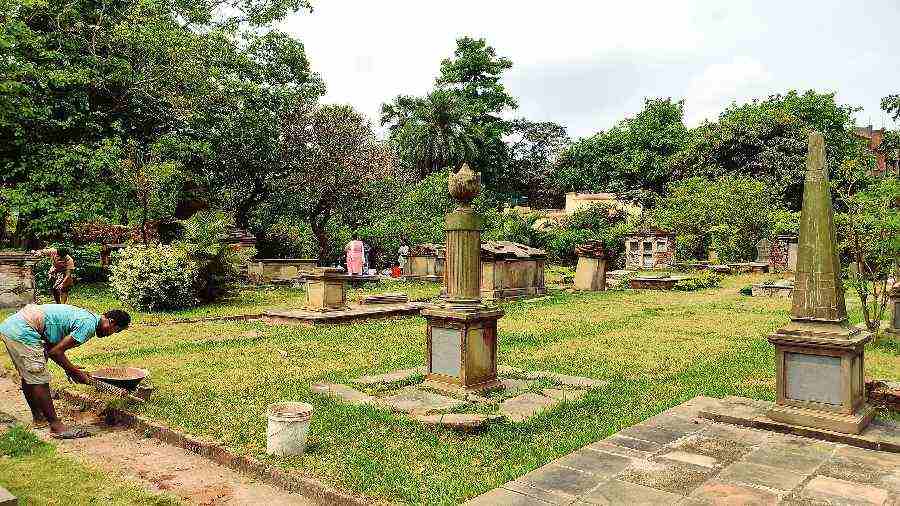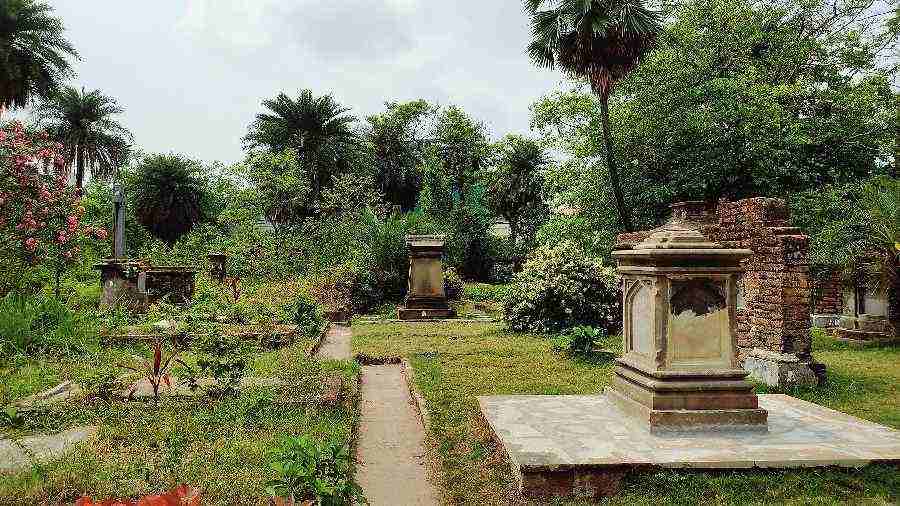A three-acre plot in the middle of the bustling Mullickbazar has turned into a biodiverse historical landscape.
The Scottish Cemetery on Karaya Road now has restored graves and tombstones as well as 70 species of flora and 53 species of fauna recorded so far.
Commonly spotted here are the Jungle mynah, the Common babbler, the Oriental garden lizard and the Indian gray mongoose.
Revived and restored, the cemetery continues to be an important repository of memory protected in a planned yet natural open parkland, which provides a much-needed green space to the surrounding urban sprawl.
The Scottish Cemetery was laid out in Kolkata in 1820. It contains 1,809 headstones and monuments and around 4,000 burials, principally of Scottish Presbyterians.
It continued to be used as a burial ground after Independence but some time in the 1970s, the area fell into disrepair.
In 2008, the Kolkata Scottish Heritage Trust was established to restore the site.
Over the last 14 years, the site has been cleared and the condition of the graves assessed. The gate house, the important monuments and headstones have been repaired. The whole site has been graded and landscaped.

The cemetery is being managed as a biodiversity spot by allowing the natural habitat to grow up to an extent that nurtures and encourages indigenous species to flourish and propagate
The task of restoring the graves and tombstones is going on. Till now, 200 graves have been restored.
“The overriding objective is to restore the cemetery as a managed open space,” said Nita Das, project head.
The cemetery is being managed as a biodiversity spot by allowing the natural habitat to grow up to an extent that nurtures and encourages indigenous species to flourish and propagate.
“We let the undergrowth grow to about three-feet, which then allows the ecosystem to flourish,” said Tania Das, the landscape designer.
Allowing some species like Lantana, which is often viewed as a fast-growing nuisance weed, to grow, lets birds and bees find a place to nest and create a natural habitat, Das said.
Following the cemetery’s disuse in the 70s, the site had reverted to a natural state. It had become a habitat for several indigenous endemic and threatened species, which together form a rich biodiversity of microbes, plants and animals along with preserved sections of semi-aquatic grassland and forested ecosystems.
While restoring the cemetery, instead of clearing up the entire dense overgrowth (as was done at the Indian Botanic Garden while clearing up debris after Cyclone Amphan using JCB machines), the project planners pruned it to manageable levels and let it be. The result — a micro biodiversity hotspot in the middle of the city.
“In parallel with the conservation of historic monuments, a priority of the landscape plan is to preserve the cemetery’s natural heritage as an urban parkland and as a biodiversity conservation park. This will provide several benefits such as reducing air and noise pollution, replenishing groundwater and conserving soil, flora and fauna,” said Nita.
The cemetery today is an experiential biodiverse historic landscape where visitors from around the world come to trace their Scottish ancestry.
